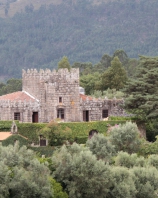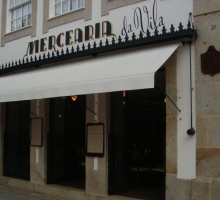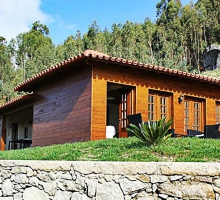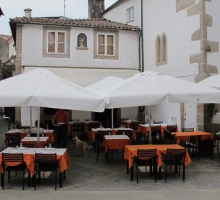Classified as Monument of Public Interest
This beautiful palace has been built in the first half of the 16th century although it follows a typology inspired by the medieval tower-house.
The flatness of the palace is developed in rectangular cross-section, in a single floor, that includes a higher tower at the center square.
Next to the manor house, the Santo Amaro chapel has been built with the same typology. With rectangular plan, it has a simple facade, divided into two registers, with a rectangular frontispiece with a simple frame, topped by the window. The facade is topped by a triangular bell. Inside, it has choir and has gilded altarpiece.
Like many palaces built in the Alto Minho early in the 16th century, the Paço do Curutelo combines the symmetry and regularity of renaissance civil architecture with medieval donjon, which at the time did not have a role as defensive, but it symbolized nobility and power of the owners.
Location: Ponte de Lima
This beautiful palace has been built in the first half of the 16th century although it follows a typology inspired by the medieval tower-house.
The flatness of the palace is developed in rectangular cross-section, in a single floor, that includes a higher tower at the center square.
Next to the manor house, the Santo Amaro chapel has been built with the same typology. With rectangular plan, it has a simple facade, divided into two registers, with a rectangular frontispiece with a simple frame, topped by the window. The facade is topped by a triangular bell. Inside, it has choir and has gilded altarpiece.
Like many palaces built in the Alto Minho early in the 16th century, the Paço do Curutelo combines the symmetry and regularity of renaissance civil architecture with medieval donjon, which at the time did not have a role as defensive, but it symbolized nobility and power of the owners.
Location: Ponte de Lima






